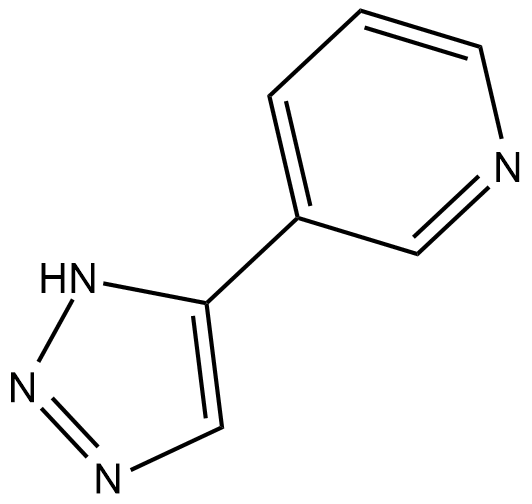3-TYP |
| Catalog No.GC19013 |
3-TYP inhibit SIRT3 with an IC50 of 16 nM, and is more potent over SIRT1 and SIRT2 with IC50 of 88 nM and 92 nM, respectively.
Products are for research use only. Not for human use. We do not sell to patients.

Cas No.: 120241-79-4
Sample solution is provided at 25 µL, 10mM.
3-TYP inhibit SIRT3 with an IC50 of 16 nM, and is more potent over SIRT1 and SIRT2 with IC50 of 88 nM and 92 nM, respectively.[1]
In vitro, with 50 μM 3-TYP abrogated the barrier protective effect of PD in multiple organs of septic mice. In HUVECs, 3-TYP (50 μM) diminished PD-mediated protection against F-actin redistribution, cadherin–catenin complex dissociation, and endothelial monolayer hyperpermeability.[3] In vitro study it demonstrated that at 100 µM, 3-TYP decreased expression of genes involved in lipolysis and glucose transport GLUT4 compared to HNK. At the meantime, 3-TYP also caused an increase in gene expression of adipocyte-specific cytokines, including IL6, resistin, and TNF-α. In vitro, treatment with 100 µM 3-TYP obviously inhibited glucose uptake in 3T3-L1 adipocytes in contrast to control in the presence of insulin.[5] In A/R-treated H9c2 cells, 4-P-PDOT (10 μM) and 3-TYP (5 μM) treatment resulted in no notable difference in cell viability. In addition, combination wiith 4-P-PDOT and 3-TYP elevated apoptotic signaling by increasing cleaved caspase-3 and Bax expression while decreasing Bcl-2 expression compared with that in the A/R + Mel group.[6]
In vivo experiment it suggested that treatment with 50 mgkg intraperitoneally 3-TYP reversed the induction of mitophagy by decreasing the expression levels of FOXO3α, BINP3, LC3-II/LC3-I, SOD2, PRDX3, and P62.[2] In vivo efficacy test it indicated that C57BL/6 mice were administrated 50 mg/kg 3-TYP abolished TBM's antioxidative effects.[4]
References:
[1].Pi H, et al. SIRT3-SOD2-mROS-dependent autophagy in cadmium-induced hepatotoxicity and salvage by melatonin. Autophagy. 2015;11(7):1037-51.
[2].Yu W, et al. Dexmedetomidine Ameliorates Hippocampus Injury and Cognitive Dysfunction Induced by Hepatic Ischemia/Reperfusion by Activating SIRT3-Mediated Mitophagy and Inhibiting Activation of the NLRP3 Inflammasome in Young Rats. Oxid Med Cell Longev. 2020 Nov 20;2020:7385458.
[3].Wu J, et al. Polydatin protects against lipopolysaccharide-induced endothelial barrier disruption via SIRT3 activation. Lab Invest. 2020 Apr;100(4):643-656.
[4].Lv D, et al. Tubeimoside I Ameliorates Myocardial Ischemia-Reperfusion Injury through SIRT3-Dependent Regulation of Oxidative Stress and Apoptosis. Oxid Med Cell Longev. 2021 Nov 9;2021:5577019.
[5]. Lee AY, et al. Sirt3 Pharmacologically Promotes Insulin Sensitivity through PI3/AKT/mTOR and Their Downstream Pathway in Adipocytes. Int J Mol Sci. 2022 Mar 29;23(7):3740.
[6].Wu J, et al. Melatonin Attenuates Anoxia/Reoxygenation Injury by Inhibiting Excessive Mitophagy Through the MT2/SIRT3/FoxO3a Signaling Pathway in H9c2 Cells. Drug Des Devel Ther. 2020 May 25;14:2047-2060.
Average Rating: 5 (Based on Reviews and 37 reference(s) in Google Scholar.)
GLPBIO products are for RESEARCH USE ONLY. Please make sure your review or question is research based.
Required fields are marked with *




















